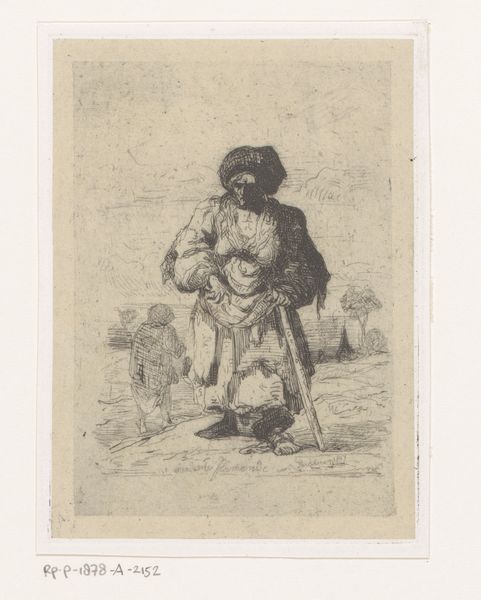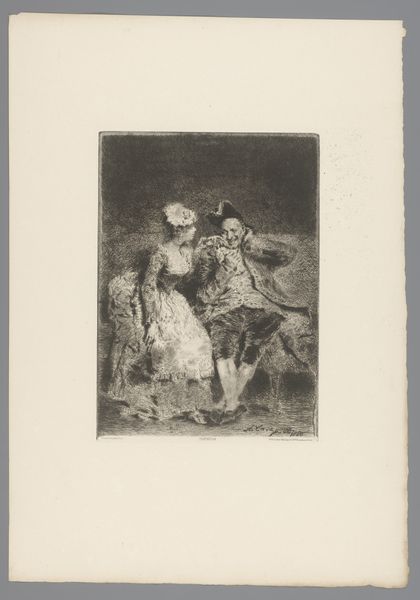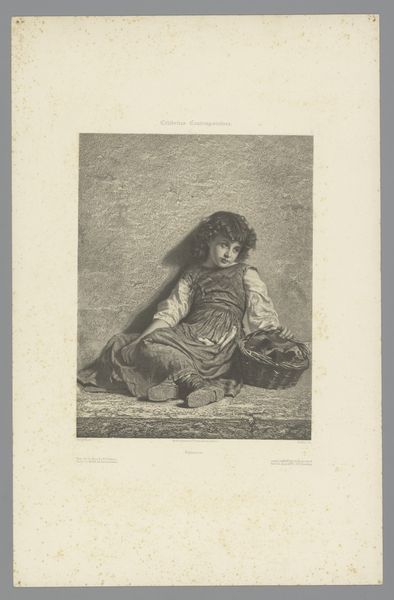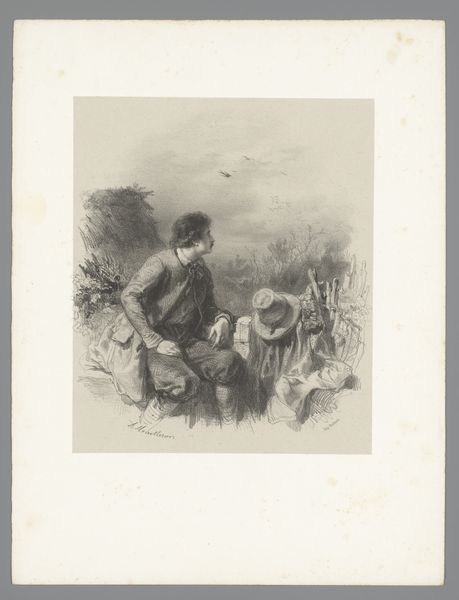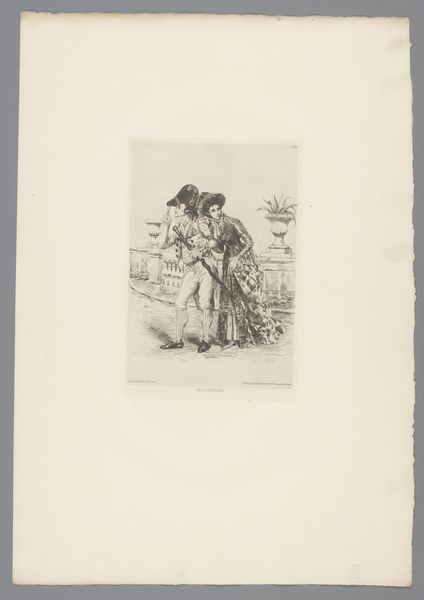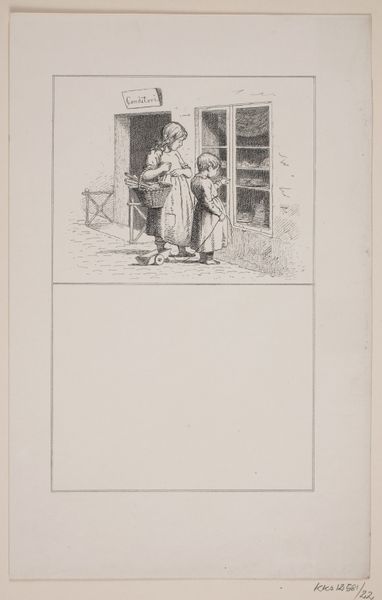
drawing, print, etching, paper
#
portrait
#
drawing
# print
#
etching
#
paper
#
genre-painting
#
realism
Dimensions: height 279 mm, width 195 mm
Copyright: Rijks Museum: Open Domain
Curator: This etching from 1877, entitled "Twee bedelaars," which translates to "Two Beggars," is by the French artist Alexandre Falguière. It’s a somber piece rendered on paper. My first impression is a sense of profound melancholy. Editor: Yes, the mood is certainly heavy. I'm immediately drawn to the material process, though—the density of lines in the etching gives the figures and their surroundings a tangible weight. It speaks volumes about the labor involved in creating the print itself, doesn't it? Curator: Absolutely. Looking through a social lens, these aren't just images; they’re representations of childhood poverty, the realities of working-class experience, and the social hierarchies that shape them. Their tattered clothing, hunched posture, all speaks volumes about societal inequalities during this period. Editor: The fact that it's an etching also reinforces this social dimension for me. Printmaking, particularly etching, allowed for wider distribution of imagery, effectively mass producing this vision of impoverished children for public consumption. How does this commodification influence the piece's overall message? Curator: I find it challenging. There’s the opportunity for awareness, yes. But, on the other hand, does reproducing their suffering inadvertently normalize or even exoticize their conditions? The gaze becomes very important here. How are these children being perceived by the largely bourgeois audience who would’ve seen it? Is it sympathy or pity? Editor: And what responsibility does the artist, Falguière, hold in shaping this gaze? His choices – the angle, the details included – directly impacts how we perceive the circumstances these children are in. Consider the deliberate crafting of that sympathy. Is it designed to promote actual change in their material condition or merely satisfy an aesthetic of suffering? Curator: Perhaps the intention, beyond simple visual record, was also to prompt conversations about labor and the economy. These figures weren't only beggars; they were children whose bodies and lives had already been commodified within a ruthless industrial economy. The absence of joyful innocence points towards that harsh reality. Editor: Ultimately, the stark simplicity of the print belies the complex web of social and economic forces that converged to create this single image. It encourages a further examination into how art itself participates in reflecting, reinforcing, and challenging existing social structures. Curator: This discussion truly emphasizes how deeply intertwined identity, politics, and socio-economic circumstances are depicted. Thank you. Editor: Indeed. This exploration brings to light not just the aesthetic elements, but also the ethical implications inherent in depicting such stark social realities.
Comments
No comments
Be the first to comment and join the conversation on the ultimate creative platform.
